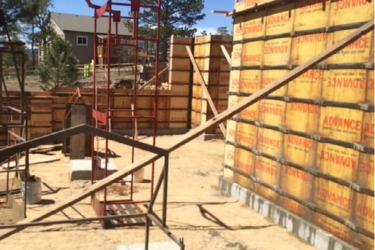If you’re building a new home, or deeply renovating the one you have, you may wonder whether to use steel beams vs. wood beams. The answer depends on your budget, design goals, construction schedule and sustainability preferences. Each material enjoys certain benefits and a few disadvantages. So, let’s take the four categories and go over the pros and cons for steel beams vs. wood beams.
BUDGET
Wood, whether it’s dimensional lumber (whole wood) or engineered, usually costs less in terms of both the material and labor to install. An exception may be in areas where forests are few and far between and steel manufacturing is copious (think Australia, not Colorado). Dimensional lumber beams, composed of several horizontally attached studs, can be built on-site, to save on supplier costs.
Laminated veneer lumber (LVL), composed of several layers of glued plywood comes pre-made from a factory but still costs less than structural steel I-beams. Also, attaching your other components to wood of either type is easy compared to steel. Steel needs fabricator-formed holes for bolts, which means careful architectural pre-planning.
Additionally, since steel is considerably heavier than any similar-sized wood product, the beams will require special handling with heavy equipment or a crane. These special handling procedures definitely add to the cost of the building.
Wood beams have their downside, though. Dimensional lumber shrinks as it dries, especially in the arid Colorado climate. In fact, humidity levels that inspire the natives to complain are still too low to prevent wood shrinkage. When the support beam shrinks, it pulls away from floor joists and can result in drywall stress fractures, floor squeaks and interior doors that fail to operate properly. While LVL avoids the shrinkage problem, it does cost more than beams of dimensional lumber.
DESIGN GOALS
Steel beams grant you added design options that you just can’t get with wood. Because steel has much greater weight bearing strength, you can use fewer vertical supports for the same span and less height of the beam. Steel offers you larger uninterrupted open spaces. Plus, since steel beams come in a variety of strengths, you can easily work long cantilevers (overhanging roofs or floors with no end supports) into your design. You can plan dramatic roof lines that extend far past the exterior walls and longer balconies without support columns below. No other material in use today can offer as many engineering options as steel.
CONSTRUCTION SCHEDULE
When the construction schedule is tight, dimensional wood beams are instantly available since they can be built on-site. LVL and steel beams require some lead time for manufacturing and delivery since they’ll be special orders. With steel beams, you’ll also need to coordinate schedules with delivery crews and equipment operators.
SUSTAINABILITY PREFERENCES
You may not think of steel as environmentally sustainable, yet it is. While wood is a renewable resource—growing, as it does, on trees—it offers less durability over the long haul, requiring the harvesting of more trees. Wood rots eventually. Although one hopes it never happens, wood burns in house fires, thereby adding carbon to the atmosphere. Termites love it.
Scrap steel readily becomes more new steel. While structural steel is subject to rust if exposed to a lot of moisture, it won’t burn in a fire. However, it could deform if the fire is long and intense enough. Otherwise, steel’s projected lifespan far exceeds that of wood if coated or galvanized against rust. Insects see it only as an obstacle on the way to wooden structures.
If you would like to learn more about steel beams in your residential construction project, please give us a call at Barton Supply. We’d be happy to discuss all of your building options.
